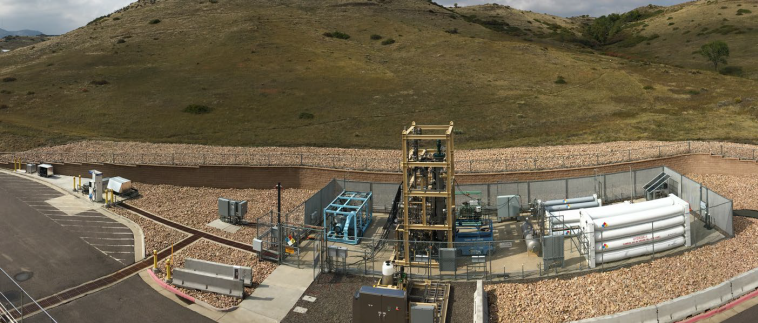Valorisation of biowaste in the United States through anaerobic digestion and distributed biogas upgrading to Renewable Natural Gas through biomethanation
Full report available here:
Valorisation of biowaste in the United States through anaerobic digestion and distributed biogas upgrading to Renewable Natural Gas through biomethanation
Decentralized solutions for resource and energy recovery from waste streams are a critical aspect of the circular economy. For key fractions of organic waste such as food waste, municipal sludge, fats, oils, and greases, amongst others, they are highly correlated with population. As such, they are a distributed resource and often can be available in varying quantities. Processes and technology solutions are needed that can scale to the available resource and also provide products of value to localized markets.
Anaerobic digestion is commonly practiced to recover energy from single and mixed streams of waste. It has been demonstrated for many decades as an industrially robust technology. However, existing anaerobic digestion technologies are capitally intensive and produce a relatively low energy value product in biogas. RNG / Renewable Natural Gas (RNG) – sometimes referred to as biomethane – is the product of biogas upgrading: carbon dioxide (CO2) and other impurities (hydrogen sulphide, water, siloxanes, etc.) are removed rendering it energetically equivalent to fossil-derived natural gas and compatible with existing natural gas engines and infrastructure.
Renewable natural gas deployments in the United States have increased significantly in recent years. As of end March 2020, there were 119 operational projects with a further 88 under construction. Renewable natural gas upgrading is a mature technology that processes biogas into high purity methane.
Biological methanation
Historically, amine, membrane, water scrubbing, or pressure-swing adsorption technologies have been used to perform this gas upgrading through the separation of carbon dioxide and methane. The process of biomethanation instead converts the carbon dioxide into additional methane through the addition of hydrogen. The biological organism utilized, a methanogen, is quite robust and demonstrates quick responsiveness to start/stop cycles and tolerance to other impurities found in biogas including H2S.
Advantages:
- By converting the CO2 found in biogas, the overall yield of biomethane is increased by 60-70% compared to upgrading technologies that separate CO2.
- Compared to incumbent separations approaches, biomethanation offers potential as a grid-scale energy storage technology by utilizing otherwise curtailed low-carbon electricity to produce the hydrogen needed by the organisms. The electrolyzer and organism can both ramp very quickly which offers opportunities for grid-scale energy storage solutions. With increasing deployment of solar and wind power generation in the United States, there has also been a rise in wind and solar energy curtailments. Biomethanation effectively can serve as a load peaking service to store excess electricity in the form of methane.
- The tolerance to impurities represents an additional advantage over catalytic methanation processes which often operate at high temperature and sometimes requires conditioning of these species to avoid catalyst deactivation/poisoning.
There are a few pilot- and demonstration-scale installations of the technology (e.g., in the US, Denmark and Switzerland), with several thousand hours of continuous operations. As the process continues to demonstrate performance and robustness, this will improve investor confidence in this technology and encourage further deployments. This case study explores some of the economic and environmental considerations.

Figure: Biomethanation system installed at the National Renewable Energy Laboratory (NREL)


